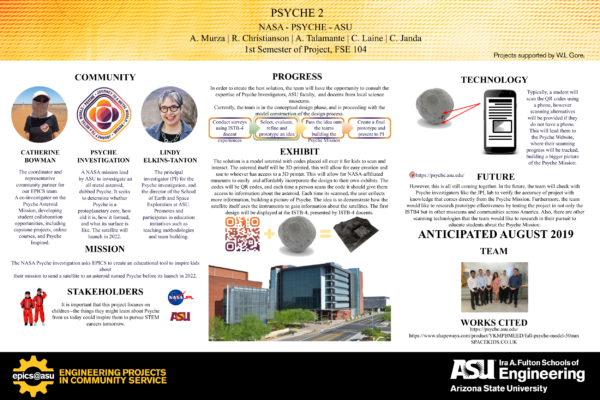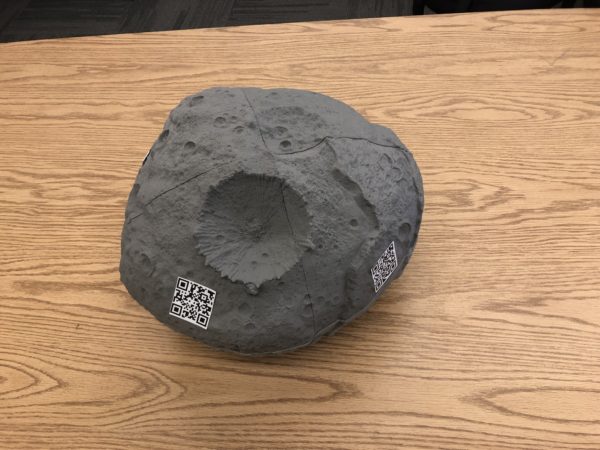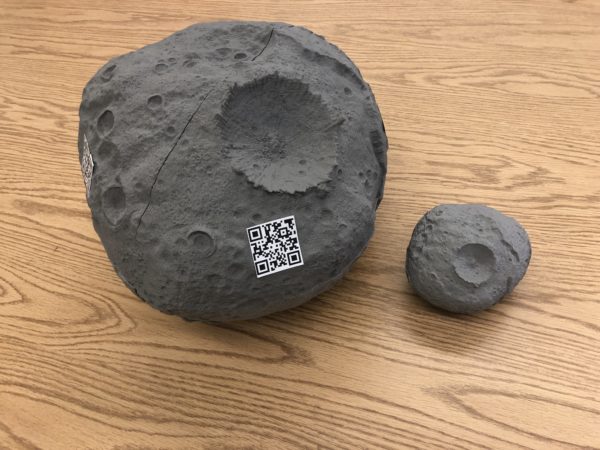EPICS Interpretive Demonstration
Institution
Arizona State University (Tempe Campus)
Class
Iron Class (2018 – 2019)
Student Team
Robert Christianson, Aerospace Engineering
Cameron Janda, Mechanical Engineering
Alta Khan, Electrical Engineering
Christopher Laine, Aerospace Engineering
Andrew Murza, Computer Systems Engineering
Adriana Talamante, Engineering Management
Academic Guidance
Dr. Stephanie Gillespie, Lecturer, ASU Fulton Schools of Engineering
project description
The purpose of this project was to create opportunities for outreach, specifically within kindergarten through 12th graders. Primarily, it was important to create awareness for the mission as a whole. The Psyche mission wanted people to be able to follow the mission, and since this is a relatively new mission it was important to start outreach now. Therefore, people can follow it up to the actual take-off. It was also critical for them to create outreach for this mission in particular because unlike other missions, Psyche consists of an orbiter rather than a lander. An orbiter, unlike a lander, is both more difficult to explain and more difficult for people to be interested in. Lastly, it was important as a whole to create interest and spark curiosity for STEM. The project works through the scanning of QR codes using a phone, replicating the motion of a satellite. This leads them to the Psyche Website, where their scanning progress is tracked, building a bigger picture of the Psyche Mission.

The showcase poster demonstrating the QR code project.

The 3D printed Psyche asteroid with various QR codes attached.

The 3D printed QR code Psyche asteroid with a smaller 3D printed Psyche asteroid.

